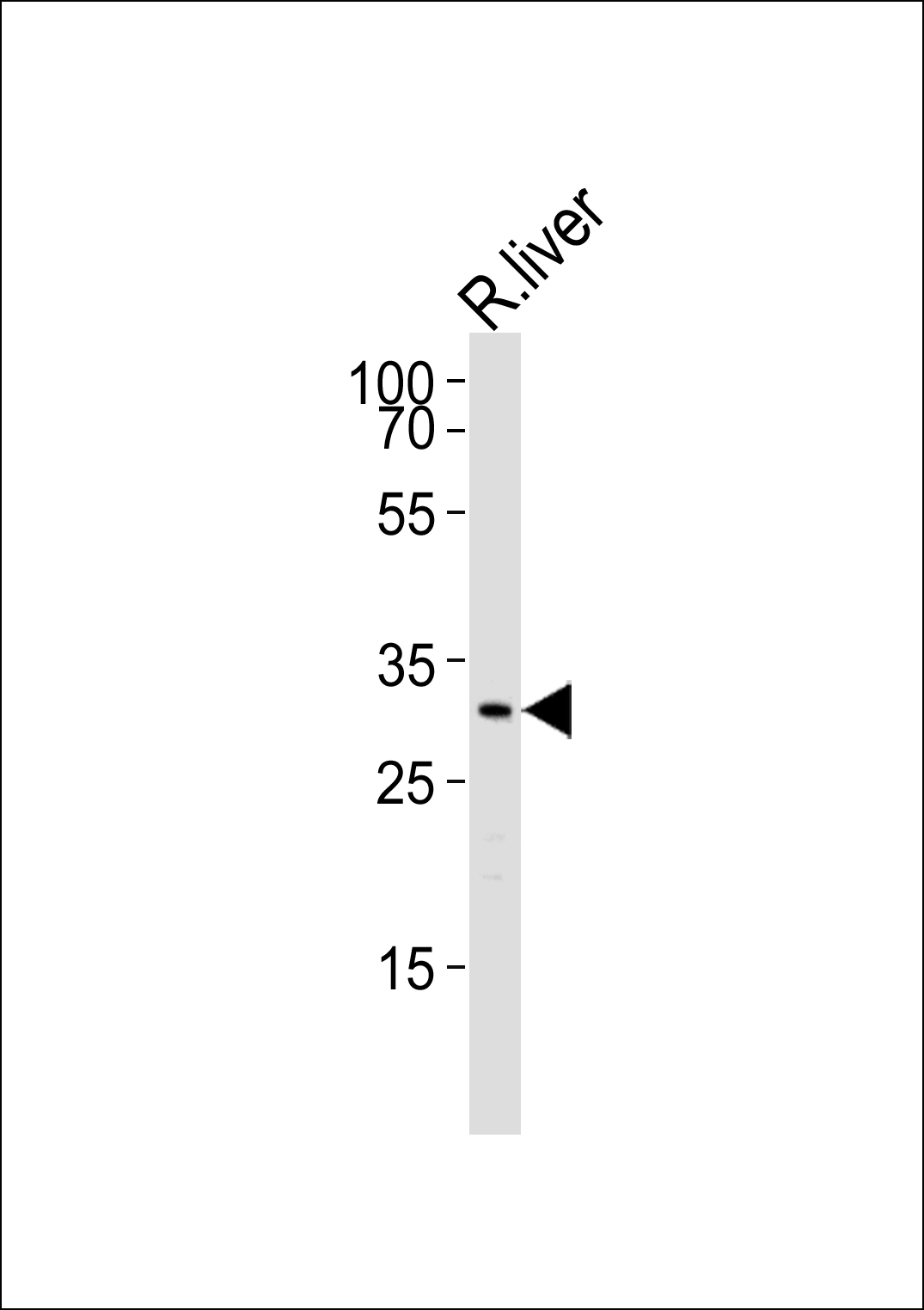Rat-Cebpb-S105 Antibody
Purified Rabbit Polyclonal Antibody (Pab)
- 产品详情
- 文献引用 : 1
- 实验流程
- 背景知识
Application
| WB, E |
|---|---|
| Primary Accession | P21272 |
| Reactivity | Rat, Mouse |
| Host | Rabbit |
| Clonality | Polyclonal |
| Isotype | Rabbit IgG |
| Calculated MW | 31503 Da |
| Gene ID | 24253 |
|---|---|
| Other Names | CCAAT/enhancer-binding protein beta, C/EBP beta, C/EBP-related protein 2, Interleukin-6-dependent-binding protein, IL-6DBP, Liver-enriched inhibitory protein, LIP, Liver-enriched transcriptional activator, LAP, Silencer factor B, SF-B, Cebpb, Crp2, Sfb |
| Target/Specificity | This antibody is generated from a rabbit immunized with a KLH conjugated synthetic peptide between 99-131 amino acids from Rat. |
| Dilution | WB~~1:1000 E~~Use at an assay dependent concentration. |
| Format | Purified polyclonal antibody supplied in PBS with 0.09% (W/V) sodium azide. This antibody is purified through a protein A column, followed by peptide affinity purification. |
| Storage | Maintain refrigerated at 2-8°C for up to 2 weeks. For long term storage store at -20°C in small aliquots to prevent freeze-thaw cycles. |
| Precautions | Rat-Cebpb-S105 Antibody is for research use only and not for use in diagnostic or therapeutic procedures. |
| Name | Cebpb {ECO:0000312|RGD:2327} |
|---|---|
| Function | Important transcription factor regulating the expression of genes involved in immune and inflammatory responses (PubMed:8336793). Also plays a significant role in adipogenesis, as well as in the gluconeogenic pathway, liver regeneration, and hematopoiesis (PubMed:10635333). The consensus recognition site is 5'- T[TG]NNGNAA[TG]-3'. Its functional capacity is governed by protein interactions and post-translational protein modifications. During early embryogenesis, plays essential and redundant roles with CEBPA (By similarity). Has a promitotic effect on many cell types such as hepatocytes and adipocytes but has an antiproliferative effect on T- cells by repressing MYC expression, facilitating differentiation along the T-helper 2 lineage (PubMed:10635333). Binds to regulatory regions of several acute-phase and cytokines genes and plays a role in the regulation of acute-phase reaction and inflammation. Also plays a role in intracellular bacteria killing (By similarity). During adipogenesis, is rapidly expressed and, after activation by phosphorylation, induces CEBPA and PPARG, which turn on the series of adipocyte genes that give rise to the adipocyte phenotype. The delayed transactivation of the CEBPA and PPARG genes by CEBPB appears necessary to allow mitotic clonal expansion and thereby progression of terminal differentiation (By similarity). Essential for female reproduction because of a critical role in ovarian follicle development (By similarity). Restricts osteoclastogenesis: together with NFE2L1; represses expression of DSPP during odontoblast differentiation (PubMed:15308669). |
| Cellular Location | Nucleus {ECO:0000250|UniProtKB:P17676}. Cytoplasm {ECO:0000250|UniProtKB:P17676}. Note=Translocates to the nucleus when phosphorylated at Ser-288. In T-cells when sumoylated drawn to pericentric heterochromatin thereby allowing proliferation (By similarity). {ECO:0000250|UniProtKB:P17676, ECO:0000250|UniProtKB:P28033} |
| Tissue Location | Liver and lung. |
For Research Use Only. Not For Use In Diagnostic Procedures.

Provided below are standard protocols that you may find useful for product applications.
BACKGROUND
Important transcriptional activator regulating the expression of genes involved in immune and inflammatory responses. Binds to regulatory regions of several acute-phase and cytokines genes and probably plays a role in the regulation of acute-phase reaction, inflammation and hemopoiesis. The consensus recognition site is 5'-T[TG]NNGNAA[TG]-3'. Functions in brown adipose tissue (BAT) differentiation. Regulates the transcriptional induction of peroxisome proliferator-activated receptor gamma (PPARG).
REFERENCES
Poli V.,et al.Cell 63:643-653(1990).
Descombes P.,et al.Genes Dev. 4:1541-1551(1990).
Thomassin H.,et al.Nucleic Acids Res. 20:3091-3098(1992).
Imagawa M.,et al.Submitted (JUL-1991) to the EMBL/GenBank/DDBJ databases.
Williams S.C.,et al.Genes Dev. 5:1553-1567(1991).
终于等到您。ABCEPTA(百远生物)抗体产品。
点击下方“我要评价 ”按钮提交您的反馈信息,您的反馈和评价是我们最宝贵的财富之一,
我们将在1-3个工作日内处理您的反馈信息。
如有疑问,联系:0512-88856768 tech-china@abcepta.com.






















 癌症的基本特征包括细胞增殖、血管生成、迁移、凋亡逃避机制和细胞永生等。找到癌症发生过程中这些通路的关键标记物和对应的抗体用于检测至关重要。
癌症的基本特征包括细胞增殖、血管生成、迁移、凋亡逃避机制和细胞永生等。找到癌症发生过程中这些通路的关键标记物和对应的抗体用于检测至关重要。 为您推荐一个泛素化位点预测神器——泛素化分析工具,可以为您的蛋白的泛素化位点作出预测和评分。
为您推荐一个泛素化位点预测神器——泛素化分析工具,可以为您的蛋白的泛素化位点作出预测和评分。 细胞自噬受体图形绘图工具为你的蛋白的细胞受体结合位点作出预测和评分,识别结合到自噬通路中的蛋白是非常重要的,便于让我们理解自噬在正常生理、病理过程中的作用,如发育、细胞分化、神经退化性疾病、压力条件下、感染和癌症。
细胞自噬受体图形绘图工具为你的蛋白的细胞受体结合位点作出预测和评分,识别结合到自噬通路中的蛋白是非常重要的,便于让我们理解自噬在正常生理、病理过程中的作用,如发育、细胞分化、神经退化性疾病、压力条件下、感染和癌症。






